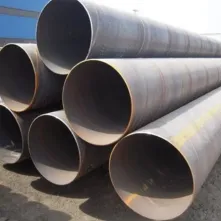-
Cangzhou Yulong Steel Co., Ltd.
-
Phone:
+86 13303177267 -
Email:
admin@ylsteelfittings.com
- English
- Arabic
- Italian
- Spanish
- Portuguese
- German
- kazakh
- Persian
- Greek
- French
- Russian
- Polish
- Thai
- Indonesian
- Vietnamese
- Zulu
- Korean
- Uzbek
- Hindi
- Serbian
- Malay
- Ukrainian
- Gujarati
- Haitian Creole
- hausa
- hawaiian
- Hebrew
- Miao
- Hungarian
- Icelandic
- igbo
- irish
- Japanese
- Javanese
- Kannada
- Khmer
- Rwandese
- Afrikaans
- Albanian
- Amharic
- Armenian
- Azerbaijani
- Basque
- Belarusian
- Bengali
- Bosnian
- Bulgarian
- Catalan
- Cebuano
- China
- China (Taiwan)
- Corsican
- Croatian
- Czech
- Danish
- Esperanto
- Estonian
- Finnish
- Frisian
- Galician
- Georgian
- Kurdish
- Kyrgyz
- Lao
- Latin
- Latvian
- Lithuanian
- Luxembourgish
- Macedonian
- Malgashi
- Malayalam
- Maltese
- Maori
- Marathi
- Mongolian
- Myanmar
- Nepali
- Norwegian
- Norwegian
- Occitan
- Pashto
- Dutch
- Punjabi
- Romanian
- Samoan
- Scottish Gaelic
- Sesotho
- Shona
- Sindhi
- Sinhala
- Slovak
- Slovenian
- Somali
- Sundanese
- Swahili
- Swedish
- Tagalog
- Tajik
- Tamil
- Tatar
- Telugu
- Turkish
- Turkmen
- Urdu
- Uighur
- Welsh
- Bantu
- Yiddish
- Yoruba

Nov . 09, 2024 23:13 Back to list
Innovative Solutions for Pipe Cap Design and Application in Various Industries
Understanding Pipe Caps Importance and Applications
Pipe caps are essential components in piping systems, serving various functions that enhance the durability and functionality of pipelines. A pipe cap is a fitting used to cover the end of a pipe, preventing the flow of substances and protecting the pipe from external elements. This article delves into the significance, types, materials, and applications of pipe caps, highlighting their critical role in various industries.
Significance of Pipe Caps
The primary purpose of a pipe cap is to seal the end of a pipe, thereby preventing leakage or contamination of the substances being transported. This sealing capability is especially crucial in industries where maintaining the purity of materials is imperative, such as pharmaceuticals, food processing, and chemical manufacturing. Additionally, pipe caps protect pipes from dirt, dust, and moisture, which could lead to corrosion or damage over time.
Pipe caps also play a vital role in the maintenance of pipelines. When pipes need to be cleaned, repaired, or inspected, caps can be temporarily installed to seal the ends of open pipes. This allows for safe and efficient maintenance procedures without risking exposure to hazardous materials or environmental contamination.
Types of Pipe Caps
Pipe caps come in various shapes and sizes, designed to fit different pipe diameters and applications. The most common types include
1. End Caps These are simple caps used to seal the end of a pipe, providing a complete seal to prevent leakage.
2. Threaded Caps Designed with internal threads, these caps can be screwed onto threaded pipes, providing a tight and secure seal.
3. Blind Flanges While not technically caps, blind flanges serve a similar purpose in larger piping systems. They are flat disks that are bolted onto flanges, sealing the end of the pipeline.
4. Socket Weld Caps These caps are designed for socket welding, providing a strong and permanent seal for high-pressure or high-temperature applications.
pipe cap

Each type of cap is engineered to meet specific functionality, making it important to choose the right cap depending on the requirements of the piping system.
Materials Used in Pipe Caps
The choice of material for pipe caps depends largely on the application and the substances being transported through the pipes. Common materials include
- Stainless Steel Known for its corrosion resistance, stainless steel caps are ideal for applications involving water, steam, and chemicals.
- PVC (Polyvinyl Chloride) Often used in plumbing and irrigation, PVC caps are lightweight and resistant to chemicals, making them suitable for various applications.
- Carbon Steel Used in industries like oil and gas, carbon steel caps provide strength and durability, particularly in high-pressure environments.
- Cast Iron Typically used in municipal water systems, cast iron caps provide longevity and durability against harsh conditions.
Applications of Pipe Caps
Pipe caps are utilized across multiple industries. In construction, they are used to seal off pipes in newly built structures. In the oil and gas industry, pipe caps are instrumental in securing pipelines during both construction and maintenance phases. In water and sewage systems, pipe caps help in managing flow and ensuring that systems remain airtight and leak-proof.
In conclusion, pipe caps are fundamental to the integrity of piping systems in various sectors. By providing a reliable seal, protecting against external factors, and facilitating maintenance, they ensure the efficient operation of pipelines. Understanding the different types, materials, and applications of pipe caps is essential for professionals in the industry, enabling them to make informed decisions that enhance system performance and safety. With their diverse functionalities, pipe caps undoubtedly play a critical role in modern infrastructure.
Latest news
-
ANSI 150P SS304 SO FLANGE
NewsFeb.14,2025
-
ASTM A333GR6 STEEL PIPE
NewsJan.20,2025
-
ANSI B16.5 WELDING NECK FLANGE
NewsJan.15,2026
-
ANSI B16.5 SLIP-ON FLANGE
NewsApr.19,2024
-
SABS 1123 FLANGE
NewsJan.15,2025
-
DIN86044 PLATE FLANGE
NewsApr.19,2024
-
DIN2527 BLIND FLANGE
NewsApr.12,2024
-
JIS B2311 Butt-Welding Fittings LR/SR 45°/90° /180°Seamless/Weld
NewsApr.23,2024











